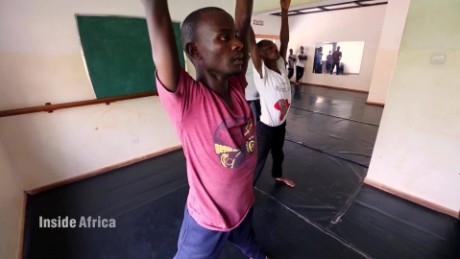Story highlights
- An estimate of nearly 2,000 children live on the streets of Kigali, the capital city of Rwanda
- The city has about ten groups that work with the government to get children off the streets
- MindLeaps has been using dance to rehabilitate vulnerable youth in Rwanda's capital since 2011
- So far, they have helped almost 1,500 boys and girls between the ages of 8 and 19.
(CNN)A life on the street for a child is an everyday struggle; for food, shelter and safety.
In Rwanda, there are no recent official statistics, but it is estimated that nearly 2,000 children live on the streets of Kigali, the country's capital city.
Until recently Pacfique Niyomwungeri, Simon Munyakazi, and Rene Byiringiro were part of that struggle, but their lives have been transformed through the power of dance.
"I never saw ballet before. It was the first time I saw people turn on their toes," said Niyomwungeri, "Dance helped me change my life."
"When I am dancing I feel happy," said Byiringiro "It makes me forget my past for a bit."
"It was difficult to protect my younger brother, Joseph, on the street," said Munyakazi . "When we are dancing I feel we are in heaven."
They are the voices of MindLeaps, a nonprofit organization that has been using dance to rehabilitate vulnerable youth in Rwanda's capital since 2011. So far, they have helped almost 1,500 boys and girls between the ages of 8 and 19.
"Through dance we have a standardized curriculum. There is a structure. They have to listen to their teachers and listen to their bodies. They have to follow instructions and work together as a team," Eugene Dushime Country Director of MindLeaps told CNN.
The program offers additional classes as most street children have had very little formal education. The organization's ultimate goal is to get each child into a school and reintegrated back into society.
The city has about ten groups that work with the government to get children off the streets but MindLeaps is the only one that uses dance in their rehabilitation curriculum.
Parental neglect, divorce, poverty and abuse are common reasons children end up on the streets. Nyomwungeri, Munyakazi, and Byiringiro all left home because their families could not support them.
Charles Hazabintwali, director of Les Enfants de Dieu, another organization that helps street children believes Rwanda's street children epidemic can be traced back to the 1994 genocide. "The genocide happened and ended but after people are still living with consequences or problems from that genocide. That's how you can find kids who don't care about anything because their parents don't care because of the trauma they are living with."
The rigorous dance classes at MindLeaps develop cognitive skills that help their students succeed. They say, when a child goes on to school, many perform in the top 20% of their classes.
Today they are no longer invisible children living on the streets. They are determined, and passionate dancers who have overcome extreme poverty and have found a way to soar.













